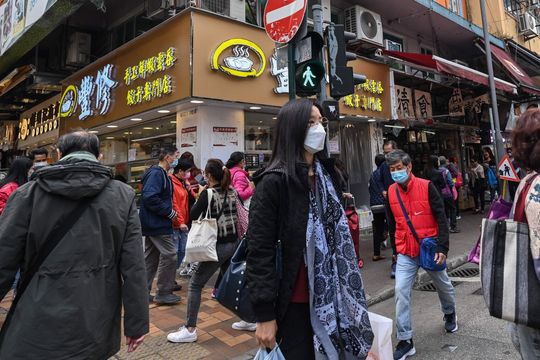In a matter of days, China, the world’s second-largest economy, is set to reopen its borders, abandon quarantine measures, and shed three years of zero-tolerance Covid-19 policies — setting up another likely jolt to financial markets still trying to heal from an abysmal 2022.
China’s Jan. 8 reopening has the potential to create another round of inflationary pressures worldwide, just as price gains have been easing in the U.S. and parts of Europe, analysts said. Even strategists who counter that such a scenario isn’t likely to come to fruition said that, at the very least, financial markets could be in for a brief scare as investors and traders consider a possible repeat of 2022’s wild volatility, which produced significant losses across assets.
Wednesday’s U.S. data only underscores the worry that could take root in the days ahead: One of Covid’s longest-lasting impacts has been the way it has encouraged many people to sit on the sidelines and increased the demand for workers, driving wage inflation higher. U.S. job openings remained high at 10.5 million in November, a sign that the labor market remains quite strong, despite multiple rate hikes by the Federal Reserve last year. It’s easy to surmise how China, with a population of 1.4 billion people, might similarly be impacted by a lack of healthy and willing workers at a time when Covid outbreaks are gripping the country.
“China is what everybody is talking about and is a big focus in many ways in financial markets,” said Marc Chandler, chief market strategist at Bannockburn Global Forex in New York. “The question being asked is if China’s reopening is going to exacerbate the Federal Reserve’s challenge of containing inflation and drive the price of oil up. I don’t think so, but there could be a scare as China reopens.”
China is the world’s largest importer of oil. In a scenario in which oil heads toward $100 per barrel as it did last year, commodities like the Australian dollar, South African rand and Brazilian real stand to benefit the most, he said via phone. On the surface, a rise in inflation expectations and oil prices as a result of China’s reopening might look and feel like a repeat of 2021’s inflation fears to investors, though there’s less likelihood for another round of sharp losses in stocks and bonds this year, Chandler said. That’s because services inflation — which is primarily homegrown — will matter more to Fed policy makers and interest-rate expectations than goods inflation, which is impacted more directly by what China does.
Still, Wednesday’s release of the minutes from the Fed’s Dec. 13-14 meeting surprised some market participants: It included references to China’s reopening, as well as the relaxation of its zero-Covid policies in the context of uncertainties around the inflation outlook.
Prior to the release of the Fed’s minutes, the first two trading days of the new year had been consumed largely by almost universal expectations for a 2023 recession plus signs of slowing inflation in France and Germany, as well as U.S. economic data suggesting the labor market remains tight. Few signs of broad-based worry about China’s reopening have yet to emerge in financial markets, though oil futures began the new year with sharp losses over the Asian country’s surge of Covid cases.
The impact of China’s reopening “is not being reflected” in markets, with traders expecting the fed funds rate to peak around 4.9% before the Fed starts to cut rates, said Derek Tang, an economist at Monetary Policy Analytics in Washington. “The risk is that China messes that up and that the Fed might have to restart hikes depending on how China goes,” followed by other major central banks.
“The reason would be that you have China unleashing huge demand on the world, but not supplying that much more to the global economy, and that can bring global inflation up,” Tang said by phone. The absence of cheap Chinese-made goods at a time when cities like Shanghai and Beijing appear to be having trouble finding enough people to work “could be another challenge western central banks have to grapple with… One of the world’s largest economies suddenly reopening is going to be really destabilizing from a macro view and we don’t know how this is going to settle or how long it will take.”
Meanwhile, “we could see the stock market reacting in a very volatile way and could see profit compression being a very big story” in 2023, he said. If companies experience lower profits at a time of higher interest rates, “we could see a very big hit to the valuation of companies, but there will be winners and losers. It’s like playing a game of mahjong, when all the tiles are being shuffled.”
On Wednesday, all three major U.S. stock indexes DJIA, +0.40% SPX, +0.75% ended a choppy session with gains after the Fed’s December minutes. Treasury yields finished the New York session lower, with the benchmark 10-year rate TMUBMUSD10Y, 3.711% down for the fourth straight session. And fed funds futures traders factored in higher chances of smaller-than-usual, quarter-of-a-percentage-point rate hikes at each of the Fed’s meetings in February and March.

